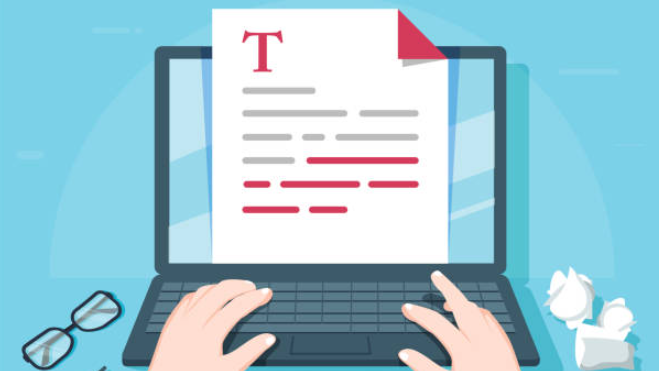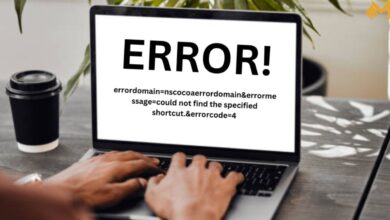
Sometimes it might seem like writing the essay is the most important step, but revision is just as – if not more – valuable to the success of the paper.
The hard work of putting an essay together might make a student feel that revision is unnecessary, but it is an important step that leads to a great final draft. A student can rely on writing tutors and ask not only to write my essay for me, but also to edit, peer reviews, or even instructor comments to help with revision, but a student can even approach this process on his own. If he’s not sure how to undertake the task, these hints might help.
Focus on the Big Picture
No matter what type of essay a student is trying to write (or for what class, for that matter), a student will be able to improve her essay simply by looking at the big picture. In other words, before reading through her paper, a student should write down a few ideas of what she wants to “see” in her paper. She’ll want to keep her thesis in mind because her thesis is the main idea driving the paper. But she also wants to think about smaller ideas she wishes to communicate in her essay.
Reading through the essay the first time, she’ll want to look for those ideas permeating her paper throughout. If at any time her essay seems to go off on a tangent, she may want to make a note to look at it again the second time through.
When going through it a second time, she’ll want to ask herself the following questions:
- How does this information relate to the rest of the paper?
- If this section was removed, would the essay still be coherent?
- Do any sections of the paper seem forced or seem to have little to do with the rest of the essay?
Based on her answers, she should have some good ideas for where to focus her energies when revising the paper.
Strive to Be Coherent
If a student has time to further revise, his next task should be to make sure everything in his essay makes sense. It can be difficult sometimes as the writer of the essay to try to put oneself in the reader’s shoes, but it is worth the effort. Reading through his paper again, a student can ask himself these questions to help him focus on the coherence of his essay:
- Does one paragraph seem to flow logically to the next? Do the ideas of one paragraph seem connected to the ones before and after?
- Do any words seem out of place?
- Are any sentences potentially confusing?
Other Things to Keep in Mind When Revising
There are other things a student might want to look for when polishing her academic writing. Other ideas to keep in mind when reading through to revise are as follows:
- What is the tone or “voice” in the essay? Does it feel natural?
- Are sources integrated smoothly or do citations feel awkward?
- Are there parts of the essay that should refer to a source but don’t?
- Are transitions smooth? Is there any place in the essay where the writer, posing as the reader, is “pulled out” of the essay? In other words, is the flow of the essay organic, and smoothly integrated? Does everything fit together naturally?
Recognize and Avoid Copyright Infringement
Plagiarism issues, being currently on the rise, make both students and academicians wonder about the limits of using intellectual back-ups. Plagiarism is not always committed on intention.
Many plagiarized works simply contain inadequate references or display an accidental mixture of original and borrowed thoughts. Though avoiding plagiarism sounds like a challenge, it’s much easier than it seems.
What is Plagiarism?
Plagiarism is using somebody else’s thoughts, opinions, research, or any kind of visual information (graphs, charts, etc.) without acknowledging their source or without giving credit to their author. In this sense, a plagiarized essay either contains or entirely consists of content not credited for its origin – or credited incorrectly.
How to Recognize Plagiarism
A plagiarized paper typically exhibits noticeable signs of opinions and statements that don’t align with the overall argument’s logic. Statements disconnected from the essay’s central ideas often suggest intellectual property infringement.
Rewriting ideas and passages from external sources is also unacceptable, except when executed as a proper paraphrase that adheres to all academic integrity guidelines. Utilizing a Plagiarism Checker can help identify and rectify such issues.
How Not to Plagiarize
Avoiding plagiarism takes much more than just usual proofreading academic papers and adding works cited pages. It should become every writer’s habit to stick to a certain pattern of organizing his or her intellectual work-out.
- Drafting – already at the stage of research, writers should keep track of all sources they might want to use later on. To avoid confusion writers should document all contents that will be quoted or paraphrased and put down accurate notes about their origin.
- Following Citation Styles – Writers should always keep a copy of citation style guidelines at hand. They should be consulted before writing as well as during providing references. The former enables citing sources in the correct format; the latter helps to cover all the required bibliographical information.
- Building Argument Supported by Sources – The writer’s interpretation of a given topic is influenced by the reading of related literature. That’s why subsequent paragraphs must be built in such a way as to provide a clear vision of what impact sources had on the writer’s conclusions. It should be always clear how, why, and where exactly the interpretation was drawn from other sources.
What is Not Plagiarism?
Citing bare facts, so-called common knowledge, without referencing them anywhere in an essay is not plagiarism. Well-known, scientific, and objective facets of any academic domain require no credits at all. The most important skill here is the ability to differentiate between facts and interpretations or opinions.
Plagiarism must be avoided at all costs not only because it’s considered a very dishonest and shameful practice. The problem with plagiarizing is that it reduces the writer’s ability to think critically, judge independently, and develop his or her knowledge as well as writing skills.
See also: 21+ Simple Ways for Creating Viral Content
Revision is a Necessary Part of the Writing Process
It might be tempting to write a paper and call it good, but it is prudent to go back through it once or twice with an eye of scrutiny. If the writer can go back through his paper and spot opportunities for improving his paper, he can likely improve his grade and certainly improve his writing skills. The more a student revises a part of his writing process, the easier it becomes, and the student begins to learn naturally what types of things to look for in his writing.







